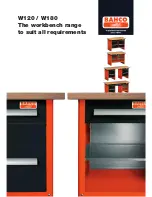
SRNE Solar Co., Ltd.
4-5F,13A Wutong Island, Neihuan Road, Xixiang, Shenzhen,China
T: +86 0755-26458295
F: +86 0755-27325578
Page 8 of 48
File version: V1.0
CAUTION
3 Product Introduction
3.1 Brief Introduction to Product
SR-EOV is a new generation of household energy storage system with two output specifications of 220V
and 110V, which can meet the diversified needs of global users. The SR-EOV energy storage system adopts a
modular design, including power modules and battery expansion modules, so it can be easily combined into a
system of any capacity required by the user.
The lithium iron phosphate batteries with high performance and long service life are used in the energy
storage module. Meanwhile, the modular structure design is adopted. Each energy storage module is internally
integrated with the intelligent BMS system, which can be easily expanded and can be combined into 20Kwh
battery pack at most.
The brand new topological circuit design is adopted in the power module, which can realize the energy
exchange between photovoltaic, mains, battery and loads, and has the function of photovoltaic and mains
charging. The photovoltaic charging module adopts the latest optimized MPPT tracking technology, which can
quickly track the maximum power point of the photovoltaic array in any environment, and obtain the maximum
energy of the solar panel in real time. In addition, MPPT has a wide voltage range. The advanced control
algorithm is adopted in the mains charging module to realize the fully-digital double closed-loop control of
voltage and current, so the control precision is high and the volume is small. The AC voltage input range is wide,
and the input/output protection functions are complete, which can realize the stable and reliable charging and
protection of batteries. The inverter module is based on the full-digital intelligent design, adopts the advanced
SPWM technology, outputs pure sine wave, converts direct current into alternating current, and is applicable for
household appliances, power tools and other AC loads.
The typical topological diagram for application of the system is as follows:
The operation and service life of the energy storage is related to the operating temperature.
The energy storage should be installed at a temperature equal to or better than the ambient
temperature.









































